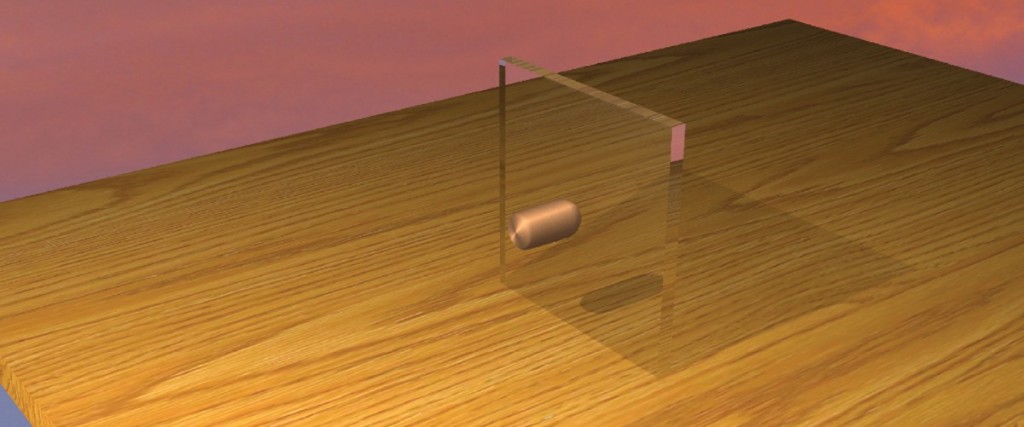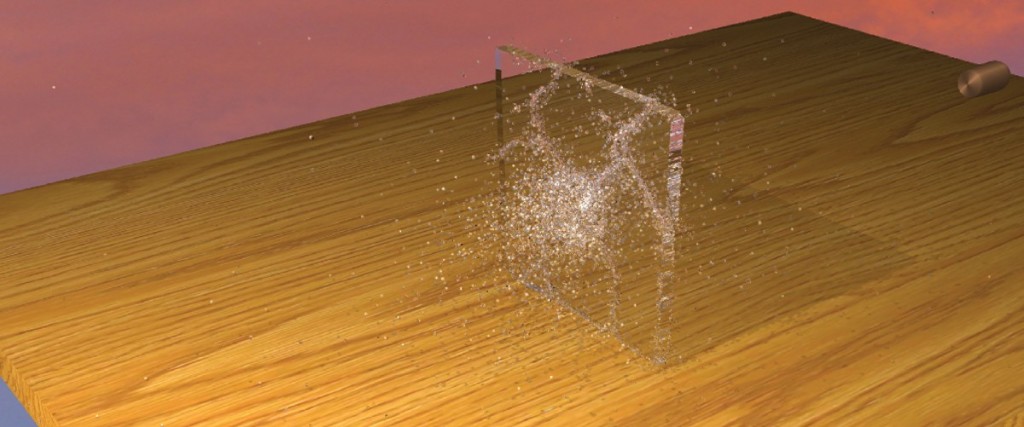Digital breakthrough
Neil Caudle
Stop-action photos of a bullet shattering glass? No, the bullet and the glass are digital, and the images are frames from an experimental production created by a faculty-student team in computer science.

If you’ve been to the movies much lately, you’ve probably immersed yourself in spectacular digital effects, some of them pioneered by researchand-development teams that included Jerry Tessendorf or Robert Geist, colleagues in digital production arts in the School of Computing. Tessendorf’s development of a software tool that mathematically captures the dynamics of water—as well as other fluids and gasses—earned him a 2008 Oscar for technical achievement and a credit in Life of Pi, which this year won an Oscar for visual effects.

Geist has received research-and-development credit for his work on The Hobbit: An Unexpected Journey, by Weta Digital. In 2011, Geist spent eight weeks of sabbatical leave with Weta Digital in Wellington, New Zealand, where he worked on normal map filtering—techniques for rendering textures and shadings. The film this February won an Oscar for scientific and technical achievement and has been nominated for its visual effects as well.

Both Tessendorf and Geist have brought their experience with commercial productions into Clemson labs and classrooms, exposing their students to the latest techniques. Geist says his work at Weta Digital “caused me to completely change the contents of the graphics course I teach.” To create effects like those shown here, the team uses a relatively new approach to modeling called peridynamics, which is based on integral equations. Peridynamic modeling is useful for creating cracks, breaks, deformations, and other irregular forms.
The team working on shattered-glass simulation includes Jerry Tessendorf, professor and director of the Digital Production Arts Program; Robert M. Geist III, professor; Joshua A. Levine, assistant professor; and Christopher Corsi, an undergraduate computer-science major, all in the School of Computing, College of Engineering and Science.


